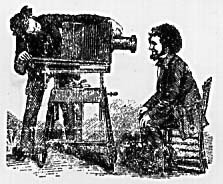A comparison between the two texts Introducing Cultural Studies and A Cultural Studies Reader on the development of cultural studies in America provides some discrepancies. The first disagreement comes from the time frame of when cultural studies first appeared in the United States. Sardar and Van Loon in Introducing Cultural Studies aver that cultural studies began to appear in the mid 1980s (Sardar and Van Loon 57). Much of their history surrounding this date is given in reference to the university and academic disciplines as they were “moving toward a more active engagement with the politics of social identity and an examination of the representations of cultural forms” (Sardar and Van Loon 57). They further claim that American studies singularly focused on the critique of media and “did not consider the link between cultural studies and political action as important of even desirable” (58).
This tendentious account of cultural studies becomes less representative when compared to the treatment of Munns and Rajan in A Cultural Studies Reader. Initially they agree with Sardar and Van Loon that there is a lack of concreteness and certainty in the origin of cultural studies, however, their historical narrative traces its evolution back to the early 1900s. Their account provides numerous examples of likely beginnings such as books, academic programs and political movements (Munns and Rajan 209). Another major event that was pivotal in cultural studies conception was the ending of World War Two in 1945. Following the war an increase of college attendance provided a more ethnically diverse and socially varied student body. This body of students, as a whole, became a politically involved group comparable to the British New Left (Wikipedia-New Left). Their aim was to create a counter culture that was in defiance of established authority as a hope to inspire social reform. A reform that was very similar in its ideals to the earlier Progressives (Wikipedia - Progressive), wanting social equality and justice. It was in the ideals of the new left that civil rights and the women’s movement flourished proving that American cultural studies held an “active engagement” in politics and was not wholly centered on the media.
Links to Wikipedia
(http://en.wikipedia.org/wiki/New_left)
This entry posits the similarities in leftist movements between the Britain and the United States.
"The New Left is a term used in different countries to describe left wing movements that occurred in the 1960s and 1970s. They differed from earlier leftist movements that had been more oriented towards labour activism, and instead adopted a broader definition of political activism commonly called social activism. The U.S. "New Left" is associated with college campus mass protest movements and radical leftist movements. The British "New Left" was an intellectually driven movement which attempted to correct the perceived errors of "Old Left" parties in the post-WWII period."
(http://en.wikipedia.org/wiki/Progressive_era)
Explains the political movement in the United States beginning around 1890 and extending into the 1920s. New Left ideals and social aims were very much similar to those of this era. Also, it was a major political movement that encompassed the entire country, exhibiting that social critique was a part of American history far before the 1980s.
New Key Word - Liberalism
"
By the 1840s, "liberalism" had become popular, along with "socialism" and "communism," and came to refer to a more or less coherent vision of man and society characterized by the wish to free all individuals arbitrarily and unnecessary constraint."

No comments:
Post a Comment